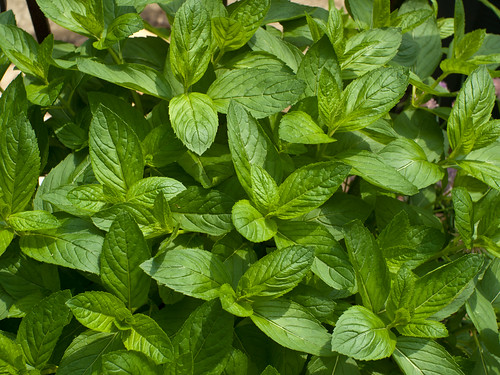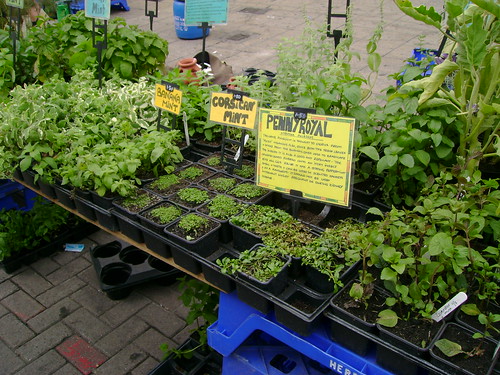
Tips for Growing Mint
Mint is a flavour-some herb. Growing good leafy plants is easy, too easy when it tries to take over.
Mint is perennial and clumps up or spreads quickly so a good tip is to constrain the roots in an old bottomless bucket. Mint likes fertile ground and the roots will travel in search of better conditions. Large clumps can be cut back in autumn, on one side encouraging growth then next year on the other side so the plant is encouraged back.
Mint Cultivation and Growing Tips
- Mints grow in shade, partial sun and full sun although they prefer cool, damp, shady locations. They like poor and stoney soil.
- Mint’s strong scent wards off insects and can be quite effective if planted with cabbage and tomatoes.
- Mint attracts few pests or disease and doesn’t need fertilizer. If you get brown spot on the leaves destroy the plant.
- Mint has the best flavor if trimmed every two or three weeks.
- Use the newest young leaves for the kitchen.
- Pot up some mint into a pot and grow in doors.
Containing and Controlling Mint Roots
- Mint is a notorious spreader that has roots that will run underground. The plant can become a right proper nuisance. Not surprisingly it can be propagated by root cutting or division.
- One favourite trick is to grow it in sections of sewage or drainage pipe. Cut a piece of pipe obtained from a builders merchant in to various lengths and bury at least a third of the pipe in the ground. The sections can be filled with compost and planted up with mint and other herbs at different heights.
- Grow the mint in a bottomless bucket or a grow bag.
Varieties of Mint to Grow
- There are several varieties of mint (25 at my last count) some of which are quite showy with green and yellow, green and white and purple tinged leaves. Some say more than 3 varieties is overkill but hey!
- I like ginger mint which grows bushy and about 2′ tall. I have also just bought a 3 inch pot of the variegated leafed pineapple mint.
- Moroccan mint makes a good mint tea and peppermint Mentha piperita is always popular
- Apple mint with rounded leaves, also known as ‘Bowles Mint’ has a better flavour than common mint Mentha spitaca.
- Most leaves fall in winter but can be dried or preserved in vinegar
- Eau de Cologne mint or Mentha piperata citrata has a purple leaf. Pennyroyal or Mentha pulegium is different in appearance to other mints such as Spearmint and Peppermint.
Growing Mint from Cuttings
- Take cuttings in spring and you’ll have young mint plants that are ripe for picking before August. The plants are deciduous but perennial so you will have leaves for future years.
- Cuttings should be taken from the top growth of your mint plant about 3″ in length. Remove lower leaves and cut the stem just below the leaf node
- Remove the growing tip on the stem.
- Insert into a pot of compost containing some perlite for drainage. Firm down but take care not to crush the stem.
Read Grow Bouquet garni Herbs.
Companion Planting Mint
- Mint is a great plant for companion planting. It allegedly aids in the growth of at least sixteen different vegetables but makes a bad companion for Parsley and Camomile. according to the Mint Companion
Edsel L Attribution-ShareAlike 2.0 Generic (CC BY-SA 2.0)
Herbs by London Permaculture CC BY-NC-SA 2.0
mint by annethelibrarian CC BY-NC-ND 2.0 ‘The mint is still growing like crazy, seemingly unaffected by frost and freezing temps at night.’



5 thoughts on “Tips for Growing Mint”
Comments are closed.